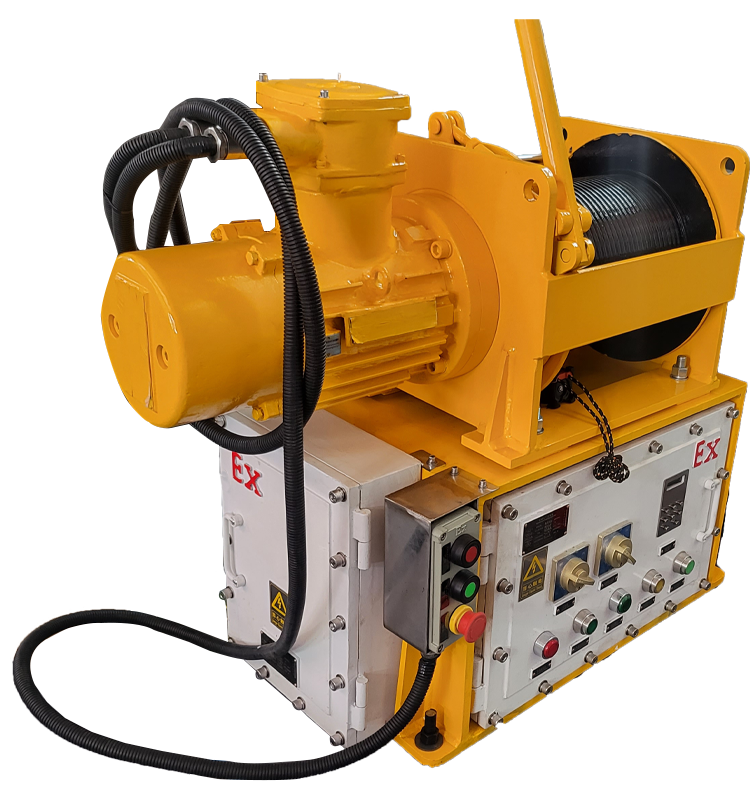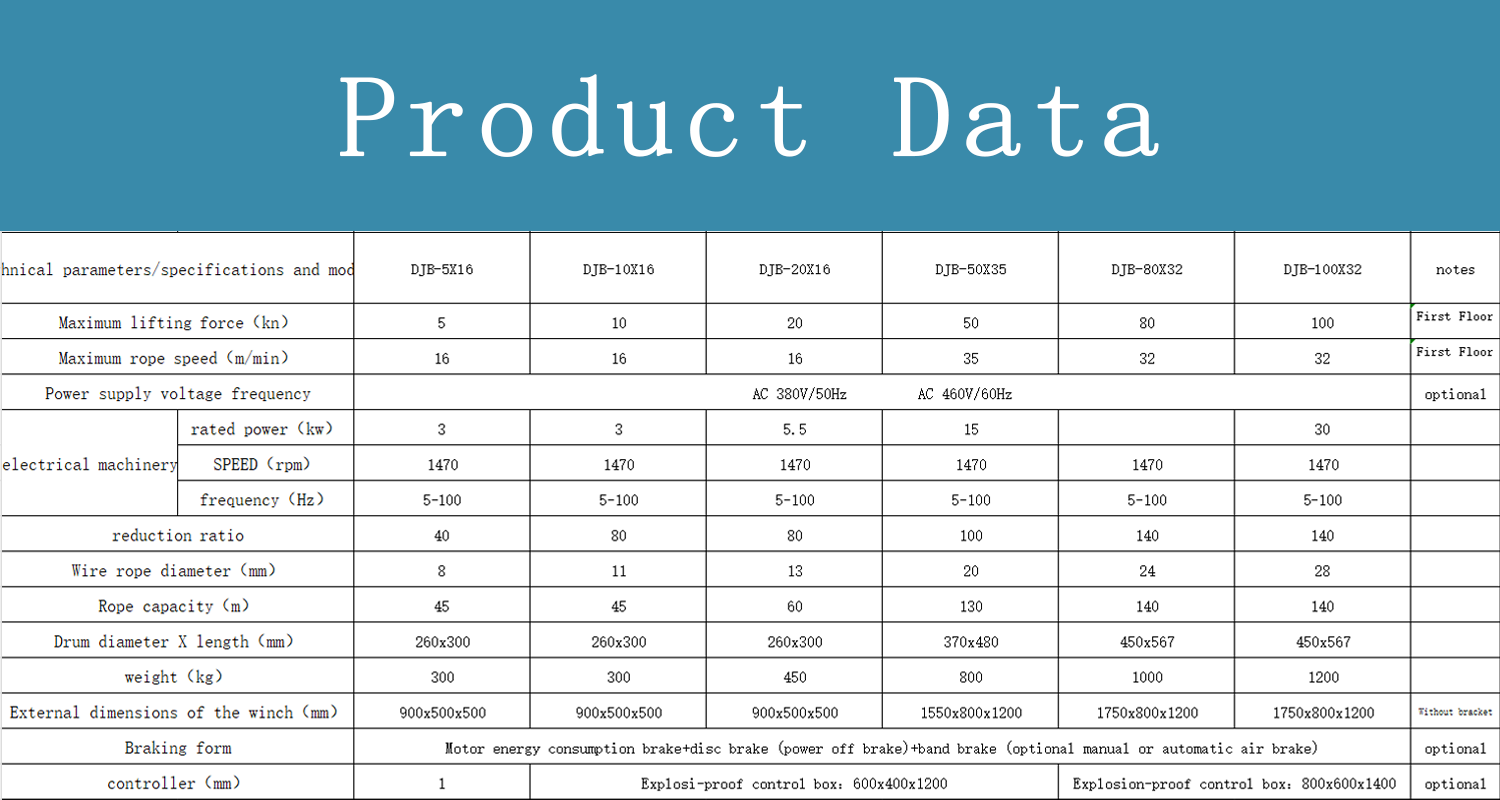 中文版
中文版



Welcome to contact us by phone:0086-0312-7969888
The electric winch for carrying people and objects mainly consists of three parts: the main body of the winch, the electric control system,
and the control system. The main body of the winch includes an explosion-proof variable frequency brake motor, winch frame, planetary
reducer, drum body, automatic rope arrangement device, rope pressure device, limit device, and belt brake. The motor, reducer, and drum
adopt a coaxial layout, and an electromagnetic power loss brake (referred to as disc brake) and encoder are installed in the explosion-proof
cover at the rear of the motor. The electric control system consists of an explosion-proof electric control box, a temperature control system,
a frequency converter, a control circuit, and a braking resistor circuit. Non explosion-proof electrical components are packaged in the
explosion-proof electric control box. The control system consists of two interlocking and backup systems: an explosion-proof (handle) operation
box and a control box.
The motor, reducer, and drum of this electric winch are arranged in a coaxial manner, with a simple structure and convenient maintenance.
To shorten the length of the winch, the planetary reducer adopts a built-in design (hidden inside the drum).
In addition, due to the much smaller power quality of the motor compared to the pneumatic motor,
and its large mass and long size at the same power level, if a conventional design is adopted,
the overall length of the coaxial electric winch will be increased by about 30% compared to the existing pneumatic winch. Even so,
it is difficult to meet the drilling platform's requirements for equipment length (shorter). In this regard,
through multiple selection and optimization of motor types, a "compact design" plan is determined,
which involves designing motors of the same power level on a larger base than conventional motors,
removing heat dissipation fans, shortening the length of the motor, appropriately increasing the diameter,
and increasing the heat dissipation area, thereby achieving the goal of shortening
the length of the motor while improving its heat dissipation efficiency.

X